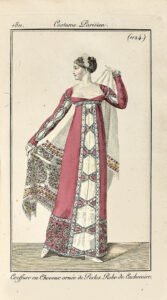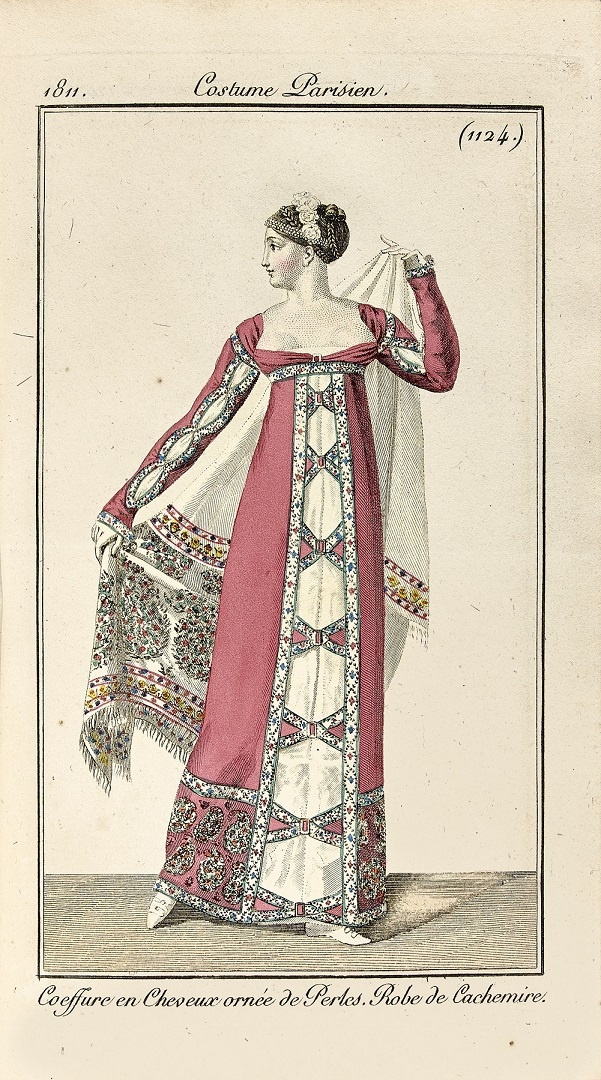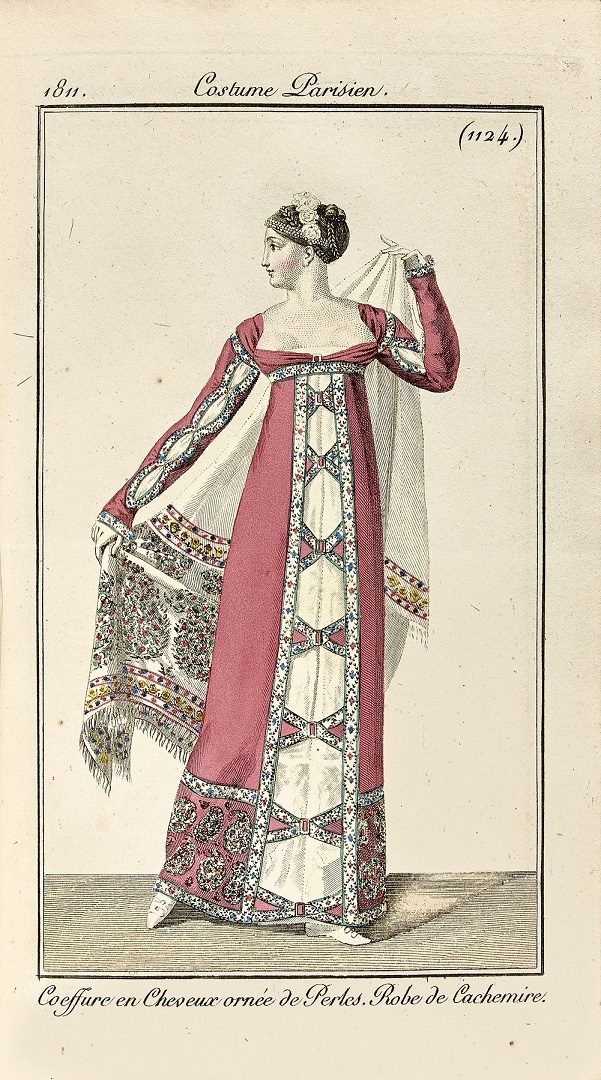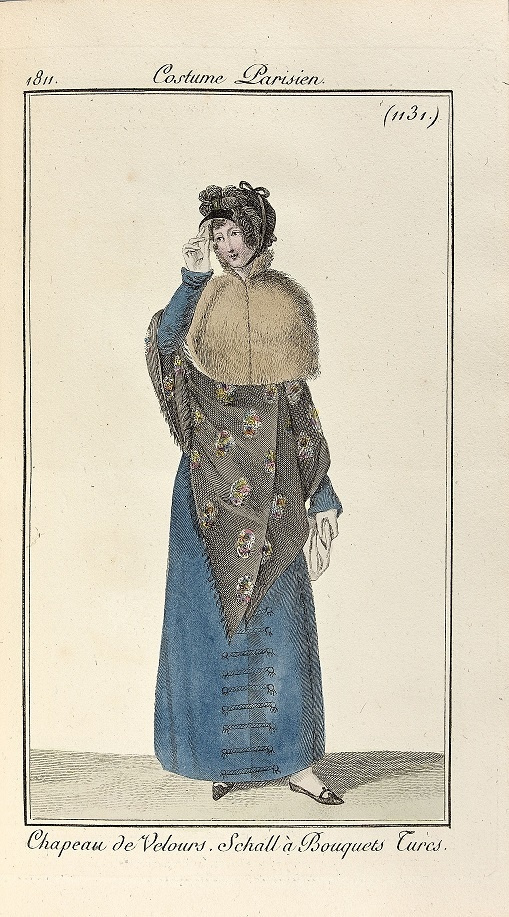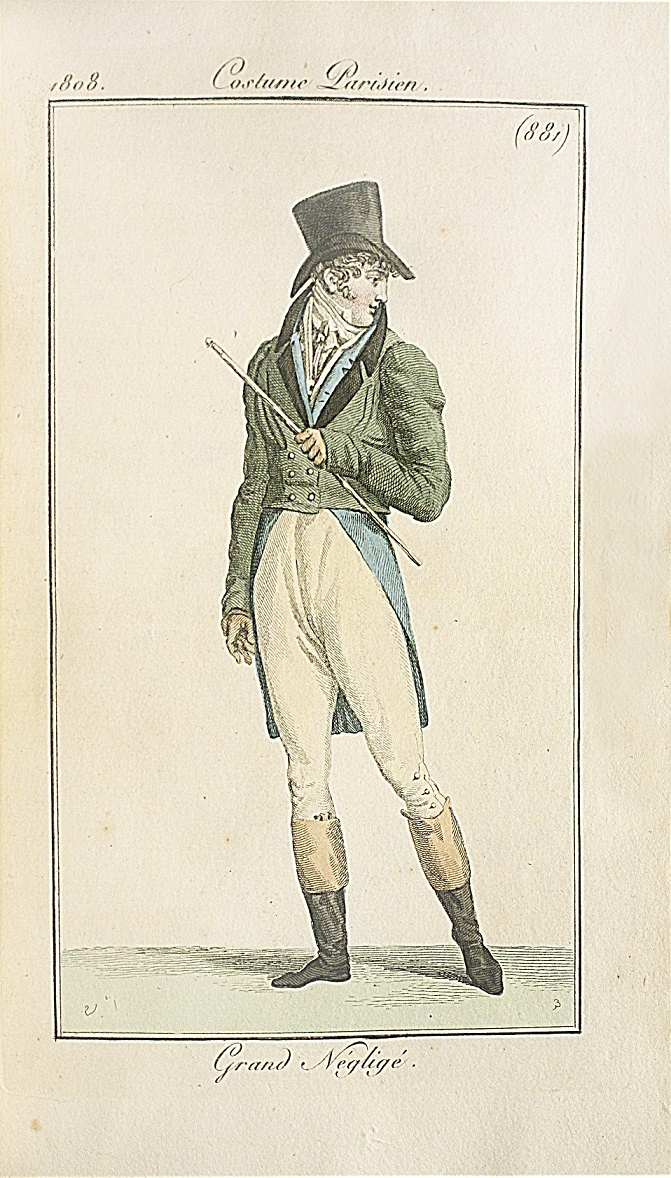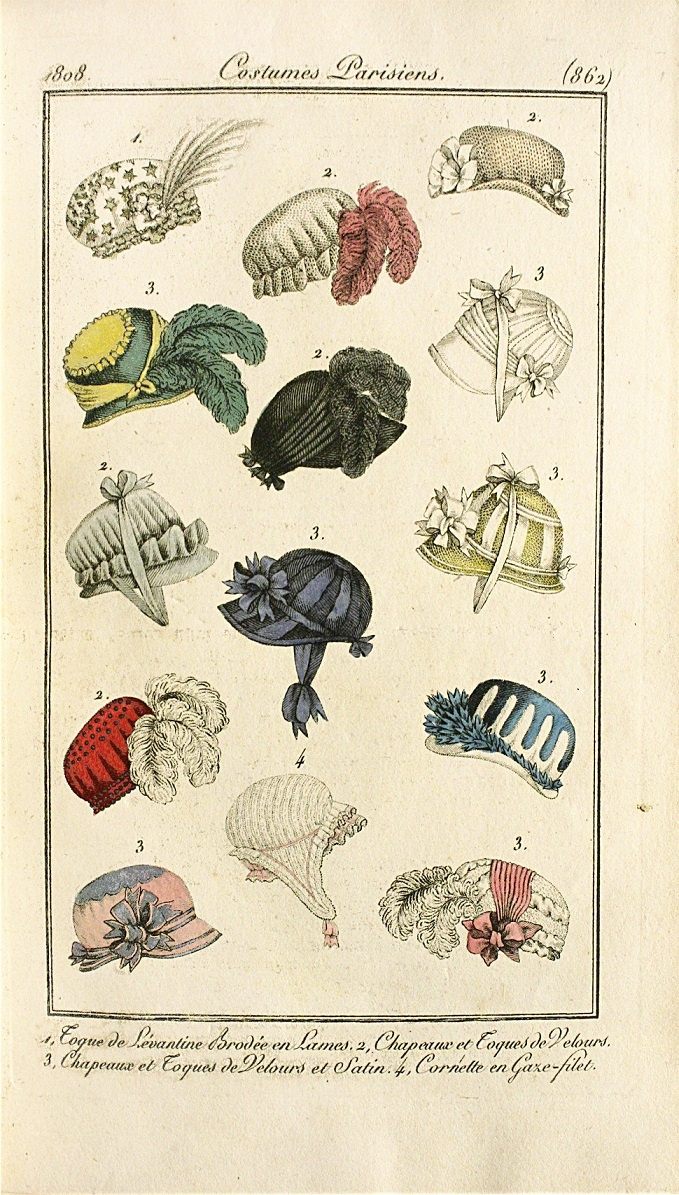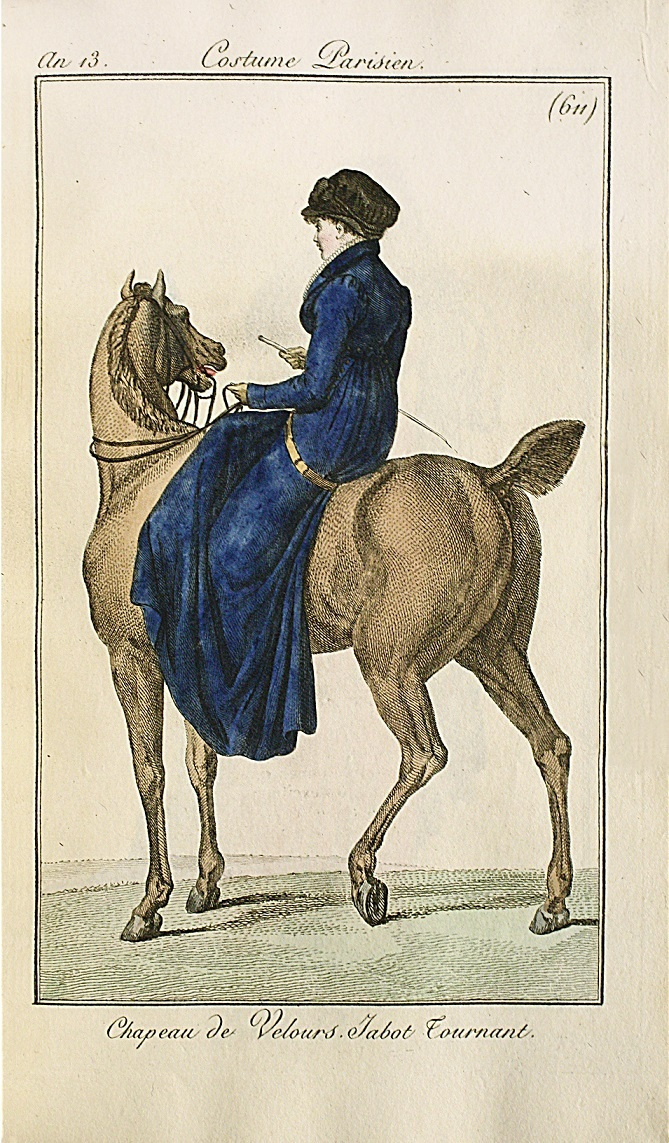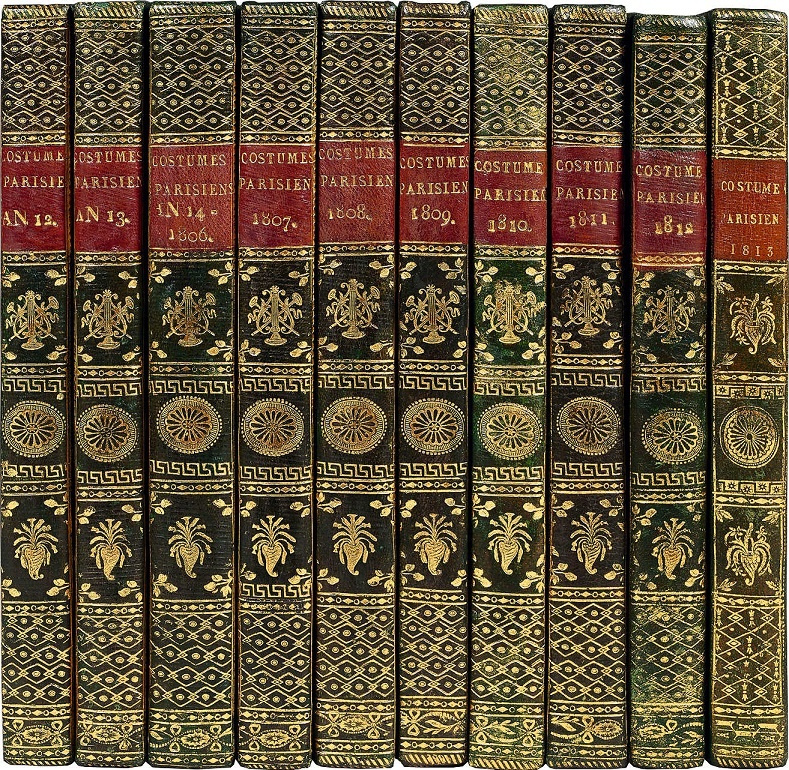Francfort-sur-le-Mein, An XII [1803] to 1813.
Ten 8vo volumes [202 x 124 mm] gathering a total of 864 plates:
-An XII : 85 numbered pl. from 500 to 584.
-An XIII : 84 numbered pl. from 585 to 668. Small stain on pl. 656.
-An XIV-1806 : 107 numbered pl. from 669 to 776.
-1807: 84 numbered pl. from 777 to 860, small stain on pl. 808, 839.
-1808: 84 numbered pl. from 861 to 944.
-1809: 84 numbered pl. from 945 to 1028, a few foxing to pl. 945, 1004, 1028.
-1810: 84 numbered pl. from 1029 to 1112.
-1811: 84 numbered pl. from 1113 to 1196. Small stain on pl. 1185.
-1812: 84 numbered pl. from 1197 to 1280.
-1813: 84 numbered pl. from 1281 to 1364. Small stain on pl. 1364.
Copy bound at the time without explanatory text. A few faces drawn in pencil on the plates showing hats.
Bound in quarter straight-grained green morocco, flat spines richly decorated, red morocco lettering pieces. Contemporary binding.
The years 1803 to 1813 of the Journal des Dames et des Modes inspired from the Journal de La Mésangère.
Colas 1565; Lipperheide, zb 15; Hiler, 486.
“Started in 1797, this paper has been continued without interruption until the end of 1829. An issue was published every five days illustrated with a fine colored engraving depicting a costume, and the publication of the 15th of each month even enclosed two plates, which was a total of 72 issues with 84 plates for the entire year, which price was of 35 fr.” (Brunet, III, 795).
“This publication, in 8vo format, was coming with fashion engravings entitled ‘Costumes parisiens’. One would be content with the engravings, in the case the text would be missing.” (Bulletin du bouquiniste, year 1857).
This fashion magazine was continuously published from 1797 to 1829. It is one of the earliest illustrated French fashion reviews.
Its model, the review La Mésangère was created in Paris on March 20th 1797, founded by the bookdealer Séllèque and by Madame Clément, with La Mésangère as collaborator for the engravings.
This periodical was published under several names: Journal des dames, Costumes parisiens, Journal des modes or Journal des dames, Journal de la Mésangère and finally Gazette des salons for its last publications.
In 1797, the return of clothing freedom came with the apparition of specialized reviews: Tableau général du Goût, des Modes et Costumes de Paris, by Francesco Bonafide, and Le Journal des Dames et des modes, launched by the bookdealer Jean-Baptiste Sellèque who joined La Mésangère. The latter was touching every aspect of the review, drawing, composing the captions of the illustrations, writing the articles. He was all around Paris, looking for the novelties he was then blaming or praising in the Journal des dames. Actually, with the royalty gone, the court was not the one doing and undoing trends anymore, it was the popular places of the capital, walkways, theaters, dances where you would show yourself in the new and audacious outfits elaborated by fashion designers and milliners.
The paper was dedicated to female and male fashions. It was showing a particular interest in accessories, especially hats and scarves. It was interested in shoes and the way to look after them. Fashionable haircuts were also recorded.
A superb copy, in mint condition, gathering in 10 volumes all of the 864 engravings of eleven years of the journal (1803 to 1813), depicting the contemporary watercolored costumes preserved in its fresh and bright contemporary bindings.
Copies of the Journal des dames et des modes gathering more than ten years of the journal, complete with all the engravings and uniformly bound at the time are of the utmost rarity.
The set forms a very delicate overview of the fashions at the beginning of the empire.
